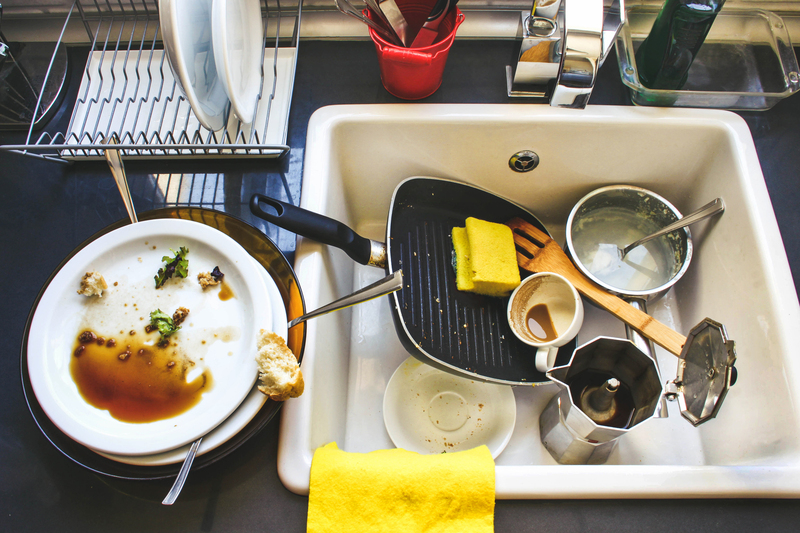Master the Art of Packing for a Smooth House Move
Moving to a new home is an exciting yet challenging endeavor. One of the most critical steps for a seamless transition is efficient packing. If you want to master the art of packing for a smooth house move, you'll need strategy, persistence, and the right know-how. This in-depth guide will walk you through every stage, ensuring you're well-prepared for your relocation and minimize stress.

Why Packing Properly Matters for a Smooth House Move
When embarking on a house move, proper packing is essential. It's not just about boxing up your belongings; it's about protecting your possessions, optimizing space, and ensuring peace of mind. Failing to pack properly can lead to damaged items, chaos on moving day, and unnecessary stress. By mastering the art of house packing, you set yourself up for a smooth, hassle-free transition to your new home.
Pre-Move Planning: Lay the Groundwork for Success
Start Early and Create a Packing Timeline
The first step in a successful move is early preparation. Don't underestimate how long packing will take! Begin at least four to six weeks before your move date. Break down the process into manageable tasks and assign deadlines. A detailed moving checklist will help you stay organized and on track.
- 4-6 Weeks Before Moving: Declutter and get rid of items you no longer need.
- 3-4 Weeks Before: Gather packing materials and start packing non-essential items.
- 2 Weeks Before: Pack rooms you use less frequently (e.g., guest rooms, storage).
- 1 Week Before: Pack daily use items and prepare moving day essentials.
Declutter: The Key to Efficient Packing
Before you dive into boxing up your home, decluttering is absolutely crucial. Sort your belongings into categories: keep, donate, sell, recycle, or toss. The fewer items you have to move, the easier your packing process will be. Host a garage sale or donate gently used items to local charities.
Gather Essential Packing Supplies
Packing efficiently requires the right tools. Invest in high-quality materials to ensure a smooth house move and the safety of your belongings. Here's what you'll need:
- Sturdy moving boxes (various sizes)
- Packing paper and bubble wrap
- Packing tape and a tape dispenser
- Permanent markers and labels
- Scissors and utility knives
- Furniture blankets and stretch wrap
- Ziploc bags for small items and hardware
Pro tip: Ask local shops for free boxes, or invest in professional-grade packing supplies to ensure durability.
Packing Room by Room: A Systematic Approach
The secret to mastering the art of packing for a successful move is tackling one room at a time. This helps you stay organized and makes unpacking easier in your new home.
1. Kitchen Packing Tips
- Sort and Purge: Expired food and unused gadgets should be tossed or donated.
- Use small boxes for heavy items: Pack canned goods and dishes in smaller boxes to avoid overloading.
- Wrap breakables: Layer plates vertically with bubble wrap or packing paper between each. Glasses should be placed upside down in divided boxes.
- Label as "Fragile" so movers handle with care.
2. Bedroom Packing Techniques
- Wardrobe Boxes: Ideal for hanging clothes--no folding required.
- Pack off-season clothing first, then daily wear before moving day.
- Bedding & Linens: Use large boxes or vacuum-sealed bags to save space.
- Jewelry and valuables: Transport personally in secure, labeled boxes.
3. Living Room Packing Best Practices
- Electronics: Whenever possible, repack in original boxes. Otherwise, wrap with anti-static materials and label cables in Ziploc bags.
- Books: Pack flat in small boxes to prevent them from becoming too heavy.
- Decor and art: Wrap in packing paper, and use corner protectors for frames.
- Rugs & Curtains: Roll, secure with stretch wrap, and place in labeled bags.
4. Bathroom Packing Insights
- Sort through medicines and beauty products, discard expired items.
- Use separate bags for liquids to avoid leaks. Place tape over lids for extra security.
- Towels: These can double as packing material for fragile items.
5. Garage and Storage Packing
- Dispose of hazardous materials safely (paint, propane, cleaning supplies).
- Use sturdy boxes and reinforce with extra tape for tools and sharp items.
- Bundle long-handled tools together and label contents.
- Pack sports equipment in their respective bags or boxes.
Labeling For Maximum Efficiency
As you pack, clearly label every box on multiple sides with the room, contents, and a number corresponding to a master inventory list. This will drastically speed up the unloading and unpacking process. For fragile items, mark the box boldly, and consider adding "This Side Up" instructions as needed.
Expert Packing Techniques for a Smooth Move
The Golden Rules of Professional Packing
- Heavier items at the bottom, lighter on top: This prevents crushed belongings and keeps boxes balanced.
- Don't overload boxes: Aim for a maximum of 40-50 lbs per box.
- Fill gaps with towels or paper: This prevents items from shifting during transit.
- Bundle cables and accessories: Use twist ties or rubber bands.
- Keep screw and hardware bags attached to disassembled furniture.
Protecting Fragile and Valuable Items
- Use bubble wrap, packing peanuts, and foam sheets liberally for glass and porcelain.
- Wrap each item individually before placing them inside a box.
- Double-box particularly valuable or fragile pieces for added protection.
Insider tip: Set aside a box of "essentials" with items you'll need immediately upon arrival--such as towels, a change of clothes, toiletries, chargers, and basic kitchenware. Clearly mark it for quick access.
Efficiently Manage Furniture and Large Items
Disassemble Where Possible
Take apart bed frames, tables, and other bulky furniture. Keep all screws, bolts, and small parts in labeled bags securely taped to the corresponding pieces. Use furniture blankets, bubble wrap, and stretch film to protect surfaces from scratches and dings.
Take Pictures Before Disassembling Electronics and Furniture
A quick photo can help you remember how to reassemble complex items in your new home.
Packing Mistakes to Avoid for a Seamless House Move
- Leaving packing to the last minute. This causes unnecessary anxiety!
- Mixing items from different rooms in the same box. Unpacking becomes a nightmare.
- Forgetting to label boxes clearly.
- Underestimating the number of boxes required.
- Overloading boxes, risking breakage and injuries.
What About Hiring Professional Packers?
Consider hiring professional packers if you have limited time, mobility issues, or valuable possessions that require extra care. They have the training and materials to secure even the most delicate items efficiently. Yet, even if you use a moving company or packers, understanding the art of packing for a smooth house move allows you to supervise the process effectively.
Moving Day: Stay Organized and Stress-Free
With everything packed and labeled, your move day can be much more efficient. Ensure pathways are clear, load boxes by room, and keep essentials handy. Conduct one final walk-through to ensure nothing has been left behind.
- Communicate with your movers about boxes that require special handling.
- Keep vital documents, valuables, and keys with you at all times.
- Have snacks and water on hand for a smoother moving experience.
Unpacking Like a Pro: Settling Into Your New Home
Once you arrive, use your box inventory to check for missing or damaged goods. Start with the essentials box, then unpack by room in order of necessity. Dispose of packing materials responsibly and recycle boxes if possible.
Quick Recap: Ultimate Packing Checklist
- Declutter and donate unused items
- Stock up on quality packing materials
- Pack room by room, starting with non-essentials
- Wrap, cushion, and protect fragile and valuable items
- Label every box clearly
- Disassemble and protect furniture as needed
- Prepare an essentials box for the first few days
- Double-check your old home before leaving

Frequently Asked Questions About Packing for a House Move
How far in advance should I start packing for a move?
Begin packing four to six weeks ahead of your move for the smoothest transition. Start with seldom-used rooms and items, and work your way to the essentials.
What's the best way to pack fragile items?
Wrap each piece in bubble wrap or packing paper, use sturdy boxes, and fill gaps with soft materials to prevent movement. Clearly label as "Fragile."
How do I keep my move organized?
Use a moving checklist, pack and label by room, keep an inventory list, and color-code boxes for quick identification on unloading day.
Conclusion: Pack Smart for a Smooth Move
By employing the strategies outlined above, you can truly master the art of packing for a smooth house move. Early preparation, thoughtful organization, and diligent labeling will turn your packing process from stressful to streamlined. Remember, moving is a journey--and with the right approach, you'll arrive not just with your belongings in one piece, but with your peace of mind intact.
Ready for a new beginning? Start your packing journey today and turn your house move into a truly smooth and successful experience!